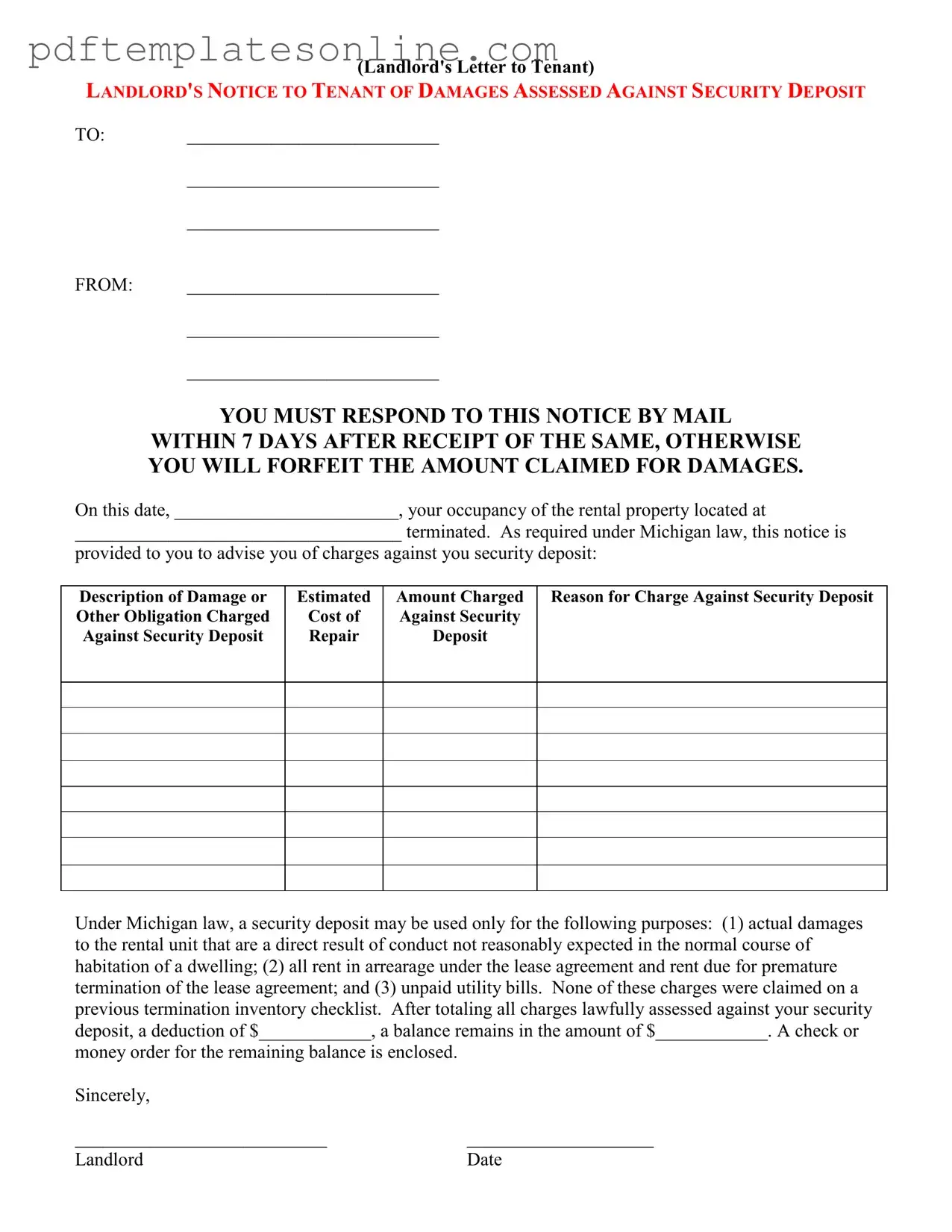Filling out the Landlord Damages Letter form can be a straightforward process, but many make common mistakes that can lead to confusion or disputes. Here are nine frequent errors to watch out for.
First, failing to include the correct date of termination is a common oversight. This date is crucial because it marks the end of the tenant's occupancy. If this date is incorrect, it can cause misunderstandings about the timeline for any claims or responses.
Second, some landlords neglect to provide a detailed description of the damages. Simply stating "damage" without specifics leaves room for ambiguity. Instead, clearly outline what the damage is, where it occurred, and how it was assessed. This clarity helps tenants understand the charges better.
Another mistake involves not specifying the estimated amount charged for each type of damage. Landlords should itemize costs to avoid confusion. Listing a total amount without breaking it down can lead tenants to question the legitimacy of the charges.
Fourth, landlords sometimes forget to mention the reason for each charge against the security deposit. Providing a rationale for each expense not only supports the claim but also fosters transparency. Tenants are more likely to accept charges when they understand the reasoning behind them.
Next, not including a clear statement about the obligation charged against the security deposit can lead to issues. Landlords should explicitly state what obligations are being fulfilled with the deposit. This ensures that tenants know what they are being charged for and why.
Sixth, some landlords fail to mention that none of the charges were claimed on a previous termination inventory checklist. This statement is essential, as it informs the tenant that these charges are new and not previously documented, which can affect their response.
Another common error is not totaling the charges correctly. An incorrect total can create mistrust and disputes. Always double-check the math to ensure that the final amounts are accurate before sending the letter.
Eighth, landlords sometimes forget to include the remaining balance due to the tenant. After listing all charges, it is crucial to state how much money is left after deductions. This transparency is vital for clarity.
Finally, many landlords overlook the importance of including a response deadline. The letter states that tenants must respond within seven days, but it’s helpful to highlight this deadline clearly. This ensures that tenants are aware of the urgency and can act accordingly.
By avoiding these common mistakes, landlords can ensure that their Landlord Damages Letter is clear, accurate, and effective. Clear communication can help prevent disputes and foster a better understanding between landlords and tenants.
